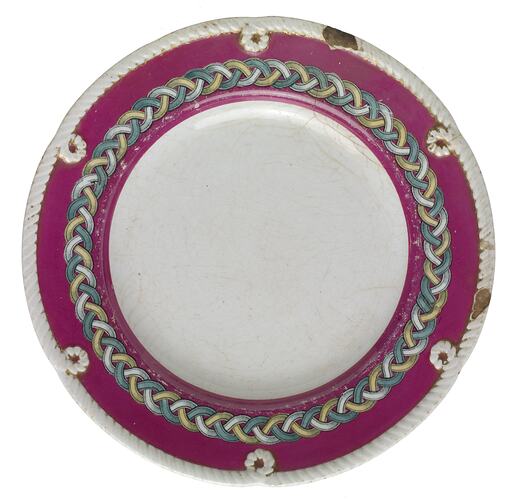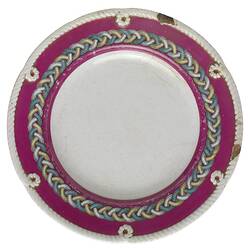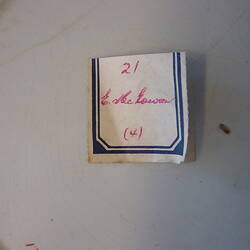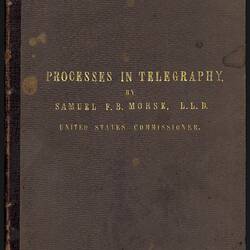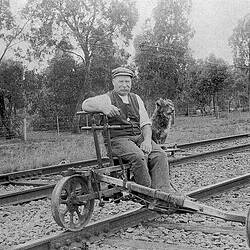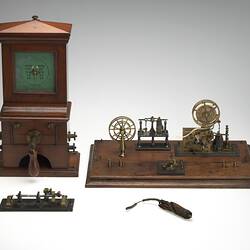Summary
Dinnner plate, one of a set of forty four items in a dinner service that was owned by Samuel McGowan, a Canadian immigrant, who was responsible for establishing the first telegraph line in the Southern Hemisphere between Williamstown and Melbourne. The first public transmission was on 3 March 1854.
The plate was collected because it was one of the few objects that could be found that are directly associated with McGowan.
The donor of the plate is the great, great grandaughter of Samuel McGowan.
Family lore has it that whenever McGowan wanted to communicate with his wife without their children understanding their conversation, they would tap on plates in morse code.
Physical Description
The plate has a raised rim with moulded rope or cable pattern. Six loops moulded into the rope at equal spacings around the plate circumference. The basic plate colour is white. The moulded rope round the edge is white, with remaining traces of gold picking out the edges of the turns of the rope strands. The applied design consists of a band of deep pink colour, about 3.5 cm wide running round the rim, just inside the white moulded rope. The pink band extends over the inner edge of the rim by about 8 mm down into the centre of the plate. Superimposed on the pink band and running right round the plate is a cable pattern comprised of three strands coloured respectively green, white and yellow. Each strand is about 4 mm wide, and the overall cable pattern is about 15 mm wide. The central part of the plate is plain white. Tebbutt's article mentions a compass in the centre of each plate, but at first glance the donated plate does not have such a compass. However, when viewed under glancing light it is possible to discern the faint outline of a pattern in the centre of the plate. Not much detail can be distinguished, but there seems to be a circular pattern, about 2 cm in diameter. Six projections, about 1 cm long extend outward from the central circle at equal spacings around its circumference. Each of these projections is shaped roughly like a fleur-de-lys. In each of the spaces between these projections is a smaller projection, about 3 mm long. The overall pattern might be described as a compass, although a compass would normally have four or eight points , rather than six. There is no sign of the Morse code motifs mentioned in Tebbutt's article. There is no specific manufacturer's name or emblem on the plate. In the centre of the underside of the plate is an impressed diamond shaped emblem which is a Design Registration Mark, of the type used on British pottery in the years 1842 to 1868. The details are rather indistinct but seem to indicate that the design was registered in April 1858. The registration may apply to the basic shape of the plate, and not necessarily to the applied design. In addition, there are the figures '2' immediately above '4621' painted on the underside of the plate. A partially detached gummed paper label in the centre of the underside of the plate carries the signature 'E. McGowan', the figure '21' above the signature, and the figure '(4)' below the signature.
Significance
The dinner plate was one of a set of forty four items in a dinner service that was owned by Samuel McGowan, a Canadian immigrant, who was responsible for establishing the first telegraph line in the Southern Hemisphere between Williamstown and Melbourne. The first public transmission was on 3 March 1854.
More Information
-
Collection Names
-
Collecting Areas
-
Acquisition Information
Donation from Ms. Trish Rowland, 10 Feb 2004
-
Past Owner
-
Classification
-
Category
-
Discipline
-
Type of item
-
Dimensions
240 mm (Width), 40 mm (Height), 240 mm (Circumference)
-
Keywords
